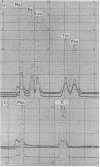Abstract
1. The reactions of β-propiolactone with amino acids were investigated under various conditions of pH and temperature to find those under which the reagent acted with specificity. 2. At pH9·0 and 22°, after 15min. of reaction, at least 85% of each amino acid had reacted, methionine and cystine being the most reactive. 3. At pH7·0 and 22° most amino acids reacted; methionine, cystine and histidine reacted almost entirely, and proline and lysine to a significantly smaller extent. 4. At pH3·0 and 22° further specificity was obtained; methionine and cystine were the only reactive amino acids. 5. Reaction at pH3·0 and 0° was specific for methionine; it was the only amino acid modified even after 145hr. of reaction.
Full text
PDF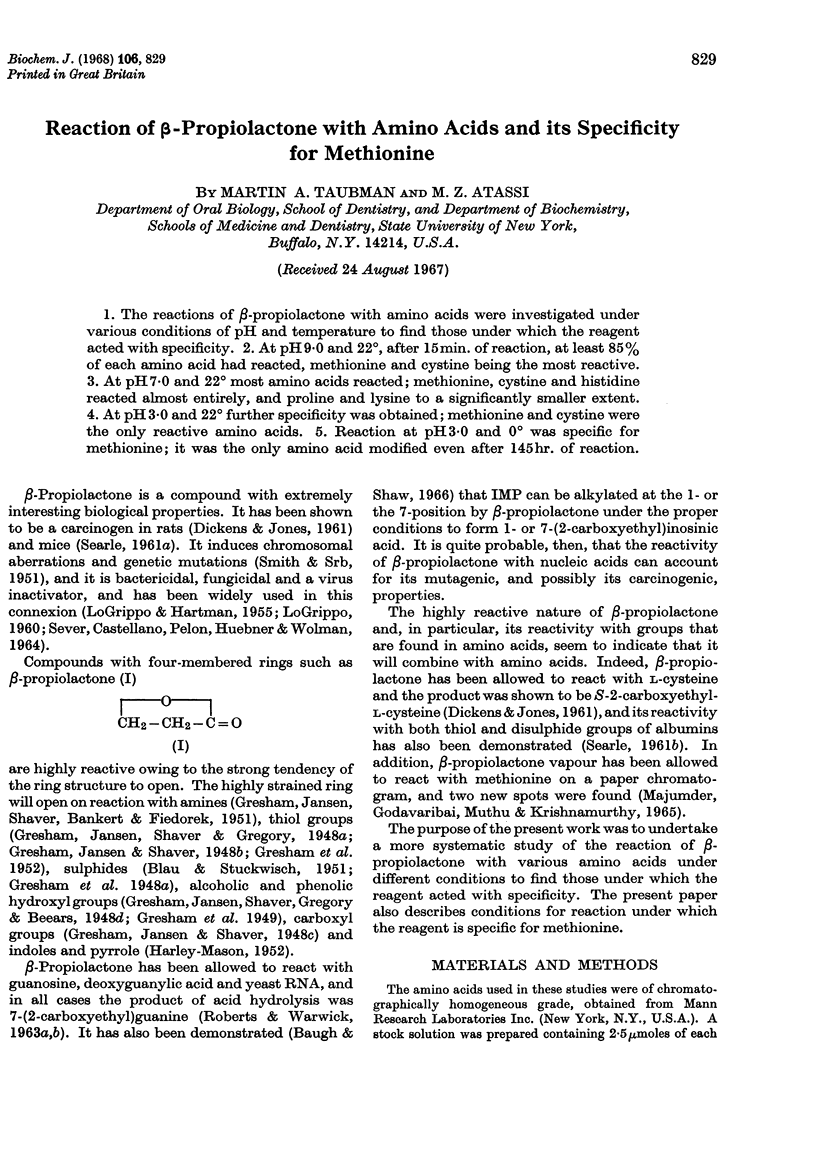

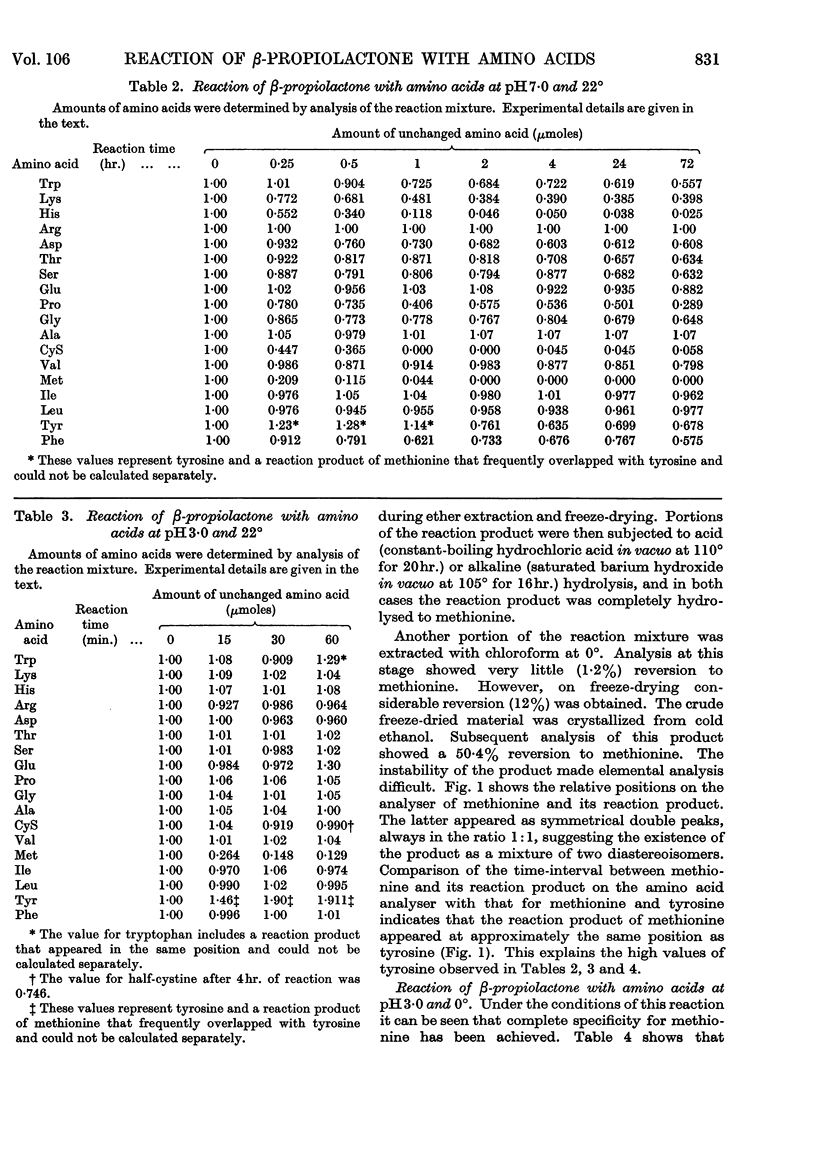

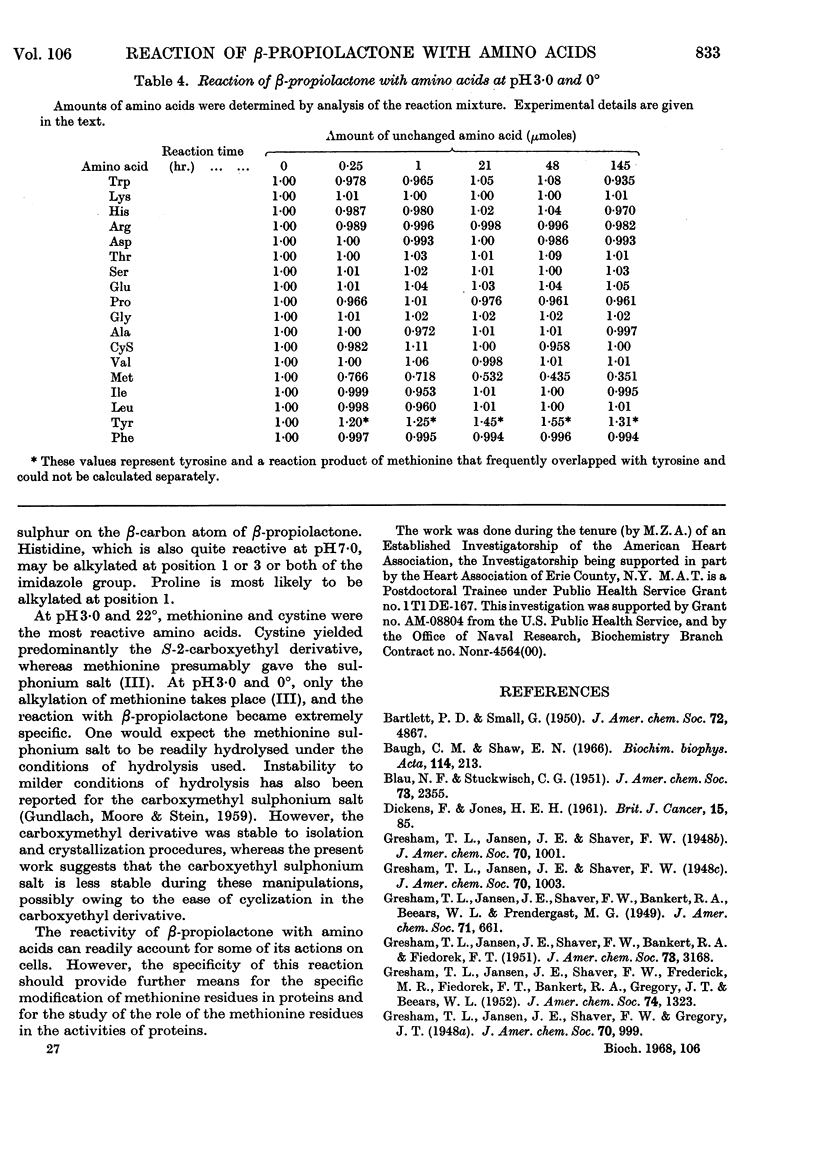
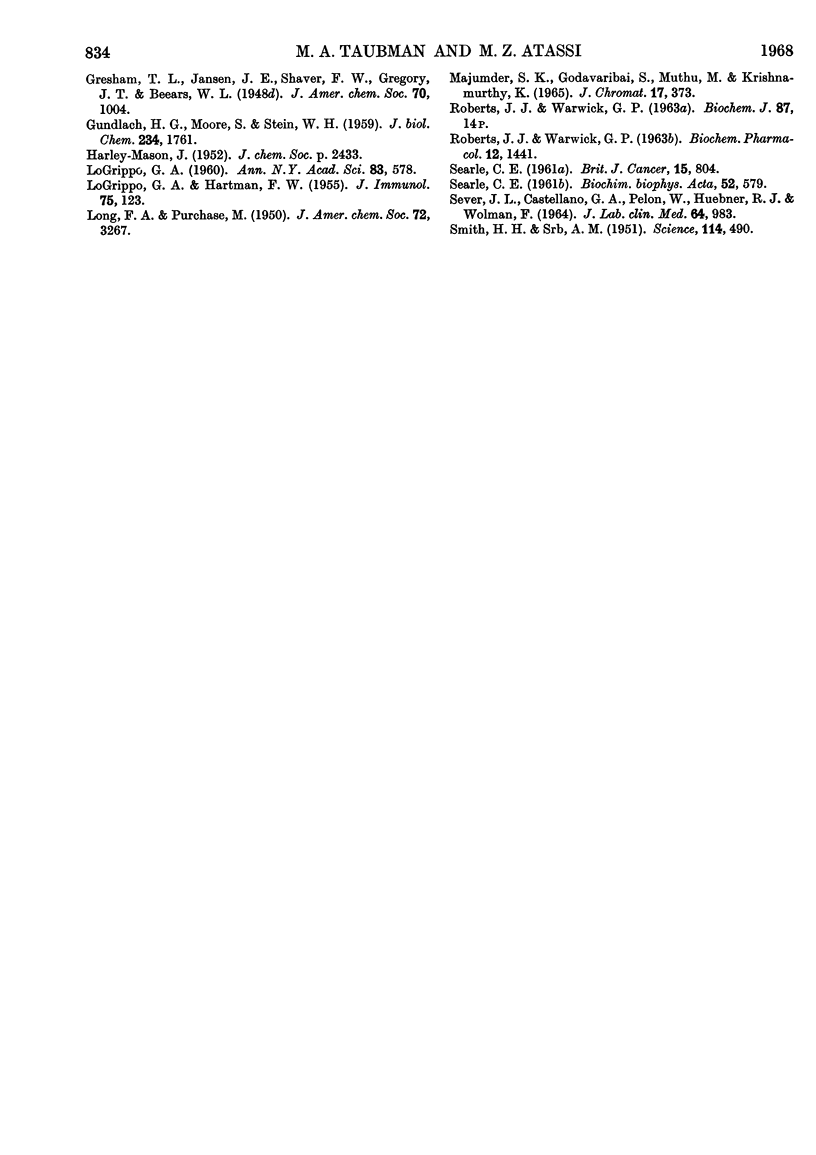
Images in this article
Selected References
These references are in PubMed. This may not be the complete list of references from this article.
- Baugh C. M., Shaw E. N. The reaction of beta-propiolactone with inosine 5'-phosphate. The preparation of N-(5-amino-I-beta-D-ribofuranosyl-imidazol-4-carbonyl)-beta-alanine 5-phosphate. Biochim Biophys Acta. 1966 Feb 21;114(2):213–221. [PubMed] [Google Scholar]
- DICKENS F., JONES H. E. Carcinogenic activity of a series of reactive lactones and related substances. Br J Cancer. 1961 Mar;15:85–100. doi: 10.1038/bjc.1961.10. [DOI] [PMC free article] [PubMed] [Google Scholar]
- GUNDLACH H. G., MOORE S., STEIN W. H. The reaction of iodoacetate with methionine. J Biol Chem. 1959 Jul;234(7):1761–1764. [PubMed] [Google Scholar]
- LOGRIPPO G. A., HARTMAN F. W. Antigenicity of beta-propiolactone-inactivated virus vaccines. J Immunol. 1955 Aug;75(2):123–128. [PubMed] [Google Scholar]
- LOGRIPPO G. A. Investigations of the use of beta-propiolactone in virus inactivation. Ann N Y Acad Sci. 1960 Jan 13;83:578–594. doi: 10.1111/j.1749-6632.1960.tb40931.x. [DOI] [PubMed] [Google Scholar]
- MAJUMDER S. K., GODAVARIBAI S., MUTHU M., KRISHNAMURTHY K. A PAPER CHROMATOGRAPHIC TECHNIQUE FOR SCREENING VOLATILE CHEMICALS FOR THEIR REACTIVITY WITH THE CONSTITUENTS OF FOODS. J Chromatogr. 1965 Feb;17:373–381. doi: 10.1016/s0021-9673(00)99882-0. [DOI] [PubMed] [Google Scholar]
- ROBERTS J. J., WARWICK G. P. THE REACTION OF BETA-PROPIOLACTONE WITH GUANOSINE, DEOXYGUANYLIC ACID AND RNA. Biochem Pharmacol. 1963 Dec;12:1441–1442. doi: 10.1016/0006-2952(63)90216-8. [DOI] [PubMed] [Google Scholar]
- SEARLE C. E. Experiments on the carcinogenicity and reactivity of beta-propiolactone. Br J Cancer. 1961 Dec;15:804–811. doi: 10.1038/bjc.1961.91. [DOI] [PMC free article] [PubMed] [Google Scholar]
- SEVER J. L., CASTELLANO G. A., PELON W., HUEBNER R. J., WOLMAN F. INACTIVATION OF THE INFECTIVITY OF VIRAL HEMAGGLUTINATING ANTIGENS WITH THE USE OF BETAPRONE. J Lab Clin Med. 1964 Dec;64:983–988. [PubMed] [Google Scholar]
- SMITH H. H., SRB A. M. Induction of mutations with beta-propiolactone. Science. 1951 Nov 9;114(2967):490–492. doi: 10.1126/science.114.2967.490. [DOI] [PubMed] [Google Scholar]



